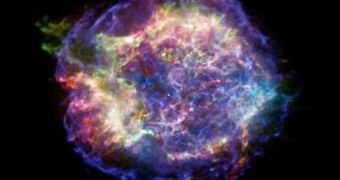Historically speaking, more than four centuries have passed since the first telescopes were pointed at the sky. In the mean time, astronomers have begun to learn how to augment their observations, and started constructing increasingly larger and complex observatories. They even learned, with the help of physicists, how to look at invisible wavelengths of light. But one thing they have been unable to do until now is look at celestial bodies, regardless of their distance from Earth, in three dimensions.
More precisely, the goal of observations is to produce images of the same celestial body from different perspectives. But this was impossible until now because astronomers went about it the wrong way. As we are confined to our planet by our lack of technology capable of exploring the Universe, we only get a single vantage point to look at the Universe. The galaxies that are oriented edge-on when viewed from Earth will never become visible from other perspectives within the foreseeable future. Three-dimensional perspectives are, however, something experts have been aspiring to for a long time.
Now, a team of astronomers from the Harvard University, led by expert Armin Rest, have taken the first steps towards breaking this limitation. Using a new technique, they managed to snap photos of the famous, gaseous supernova remnant called Cassiopeia A, from several angles. “The same event looks different from different places in the Milky Way. For the first time, we can see a supernova from an alien perspective,” Rest says. He explains that he and his group essentially modified the theory of echoes, so that it can now be applied to light rather than sound. Light coming in from celestial objects echoes, or bounces, of clouds of hydrogen, for example, and this allows for its path to be backtracked.
“Just like mirrors in a changing room show you a clothing outfit from all sides, interstellar dust clouds act like mirrors to show us different sides of the supernova,” Rest says. “This supernova was two-faced! In one direction the exploding star was blasted to a much higher speed,” adds Clay Fellow Ryan Foley, who is based at the Harvard-Smithsonian Center for Astrophysics (CfA). He is also the coauthor of the new investigation. The light echo data were collected using the Mayall 4-meter telescope at Kitt Peak National Observatory. Confirmation readings and spectra were obtained with the 10-meter Keck I Telescope.

 14 DAY TRIAL //
14 DAY TRIAL //